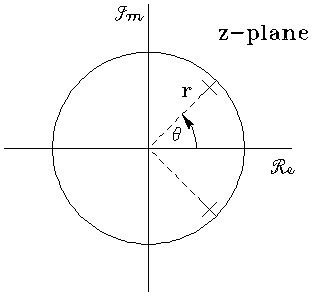

>> r = 0.996
r =
0.9960
>> fs = 8192
fs =
8192
>> [b,a] = reson(r,880/fs);
>> x = [1; zeros(4095,1)];
>> y = filter(b,a,x);
>> sound(y,fs)
>> plot(0:500,y(1:501))
>> freqz(b,a)
>> y = y/max(abs(y));
>> wavwrite(y,fs,'reson.wav');
>> sound(y)
>> N=500;
>> plot(0:N,y(1:N+1));
>> xlabel 'sample'
>> ylabel 'response'
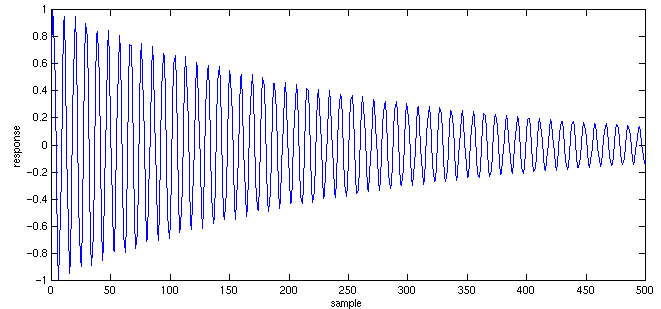
function [b,a] = RESON(rho,theta) % RESON % % Reson filter % % RESON(rho,theta) % re = rho*cos(2*pi*theta); si = sin(2*pi*theta); b = (1-rho^2)*si; a = [1 -2*re rho*rho];
Add a zero at +1 to suppress the DC gain. This improves the low-frequency fall-off at the expense of the high-frequency fall-off. This example is centered at 15 Hz with a bandwidth of 5 Hz, sampled at 8 kHz. The blue curve shows the response without the zero, and the black curve shows the response with the zero.
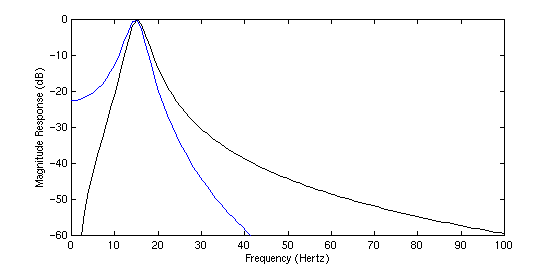
>> fs = 8000;
>> b = 2*pi*5/8000
b =
0.0039
>> r = exp(-b/2)
r =
0.9980
>> theta = 15/8000
theta =
0.0019
>> [b,a] = reson(r,theta);
>> h1 = freqz(b,a,f,fs);
>> b2 = [b -b];
>> h2 = freqz(b2,a,f,fs);
>> b2 = b2/max(abs(h2))
>> h2 = freqz(b2,a,f,fs);
>> plot(f,20*log(abs(h1)));
>> hold
Current plot held
>> plot(f,20*log(abs(h2)),'k');
Warning: Log of zero.
>> axis([0 100 -60 0])
>> ylabel 'Magnitude Response (dB)'
>> xlabel 'Frequency (Hertz)'
Another slight generalization of the reson is to place a pair of zeros near the poles along the same direction as the poles. The poles are a distance ra from the origin and the zeros at a distance rb. In the figure below the zeros and poles are very close together and very close to the unit circle.
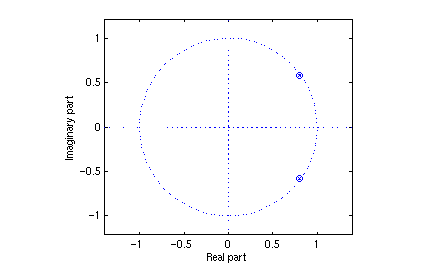
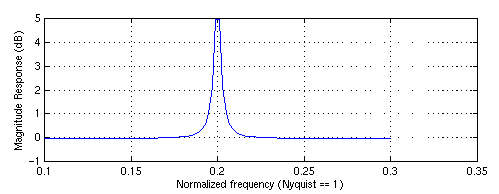
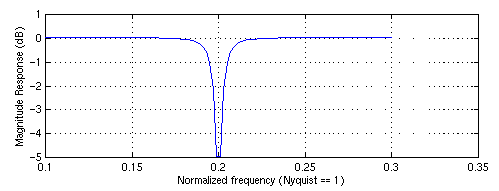
>> ra = 0.995 >> rb = 0.990 >> theta = 2*pi/10; >> b = [1 -2*rb*cos(theta) rb*rb]; >> a = [1 -2*ra*cos(theta) ra*ra]; >> w = linspace(0.1,0.3,100); >> freqz(b,a,w*pi); % boost filter >> freqz(a,b,w*pi); % notch filter
Maintained by John Loomis, last updated 6 Nov 1997